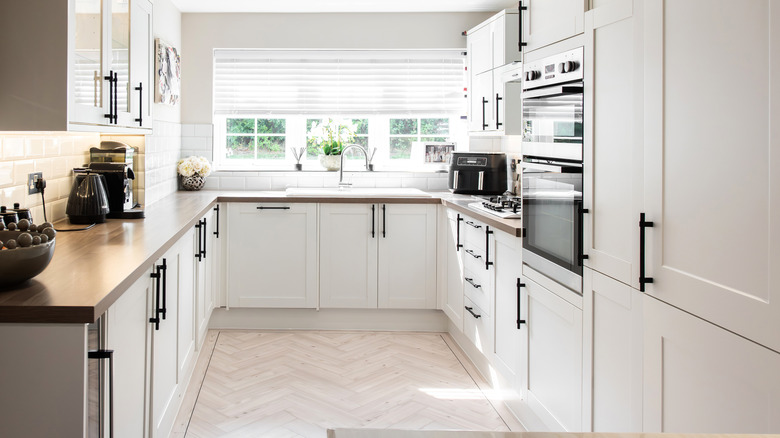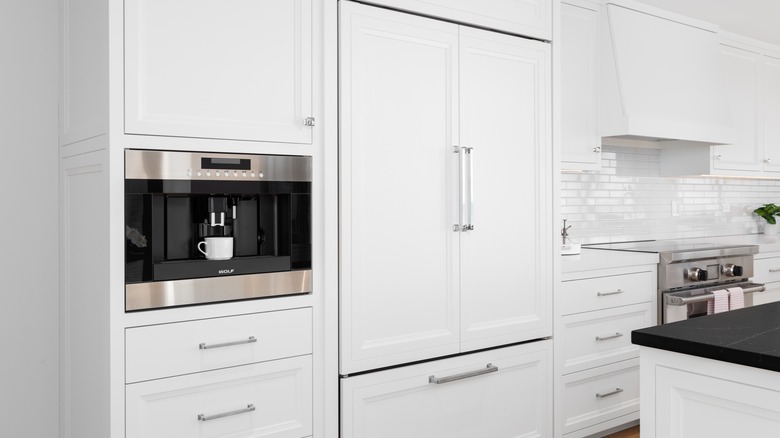Don't Fall For One Passing Kitchen Appliance Trend
On the surface, coffee is simple: Its beans are dissolved or immersed in water. And now we've probably started an argument, because when it comes to coffee, the topic has devoted fans, each advocating for their supposedly superior method of brewing the perfect cup. Coffee, we love you, and let us count the ways. There's the French press, pour over, Chemex, Aeropress, cold brew, and the old-fashioned percolator. All these methods are self-contained, and need very little shelf space in your cupboard or on your countertop.
The next strata of coffee-making machinery include everything from drip brewers to single serve capsule devices (think Keurig and Nespresso). There are also increasingly sophisticated contraptions that grind, brew, and aerate your coffee with the touch of one button, like Spinn, De'Longhi, Jura, and more. Any one of these methods is sure to deliver the cup of coffee you crave daily. For some, that's an entire pot, and for others it's a perfectly crafted single serving. But either way, whether you decide to spend a hundred or a thousand dollars on your coffee maker, we recommend that you don't fall for a kitchen appliance trend that's already passing by: the built-in coffee maker. Don't get us wrong — it's your kitchen, your rules, and we hate cluttering kitchen counters with appliances. This is why we recommend a home coffee bar adjacent to your coffee maker. This is a simple trick that will help you declutter your kitchen countertops.
The cons of built-in coffee makers
If your heart is set on a built-in unit, know that they take up more room than a free-standing machine, so be sure you have the cabinet or counter space needed. While these machines will last from eight to fifteen years, there's no guarantee the next machine will have the same sized footprint, and your installation process will have to be repeated. Some of these machines can be plumbed with their own water line, but most have a reservoir that needs to be filled by hand. Think about access, too, especially if the machine ever needs a repair. And naturally, meticulous maintenance and cleaning post-brewing is an absolute must.
No matter if you're installing a Miele, Bosch, or Thermador, you'll pay north of $3,000 for the machine before installation. But the biggest drawback in our minds is not the space, maintenance, or cost; after spending money on a built-in, it doesn't necessarily deliver a better cup than one made from a free-standing unit. For our money, we'll take the hyper-frosty industrial vibe of the stand-alone machines, ones that can vent a great cup of coffee and look cool doing it. No matter how you brew your cup, save your leftovers since coffee grounds have unexpected uses around the house, as well as in the garden for fertilizing and deterring pests.

